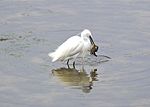The siege of Fuenterrabía took place in 1523 when the Franco-Navarrese army had taken it in a new incursion after the failure of the third attempt to reconquer the Kingdom of Navarre, which had been occupied since 1512 by troops from the unified Crown of Castile and Crown of Aragon, with Navarrese support. There were Navarrese on both sides.
The Fuenterrabía of the 16th century also included most of the municipal term of the current city of Irun, the municipality of Lezo, and parts of Hendaye, Urruña (Behovia neighborhood) and Pasajes (Pasajes de San Juan). The town and fortress were located on a hill surrounded by thick walls, mountains and the sea at the mouth of the Bidasoa River.Its border situation and its geographic characteristics made both Charles V, Holy Roman Emperor and Francis I of France covet its possession. For this reason, both nations appointed commissioners to elucidate the problems of water limits in the conflicts of the towns of Fuenterrabía and Hendaye, something that until then had been solved by agreement.
In 1512, the first counteroffensive was carried out to recover the kingdom of Navarre after its invasion by the Crowns of Castile and Aragon, in which Marshal Pedro de Navarre with 2000 men within the contingent of Lautrec and Borbón were stopped by Luis I of the Cave, II Lord of Solera. To prevent another invasion, the fortification proceeded, ordering in November of that year the construction of a castle in Behovia, which reinforced the effectiveness of the Fuenterrabía fort.
As of 1517, the territorial rights of the area were defined by law by the two kingdoms, that of Spain and that of France, leaving the natives divided.











